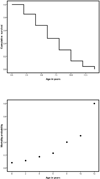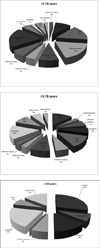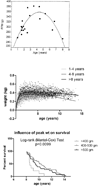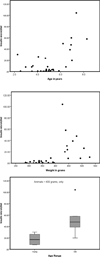The marmoset as a model of aging and age-related diseases
- PMID: 21411858
- PMCID: PMC3775658
- DOI: 10.1093/ilar.52.1.54
The marmoset as a model of aging and age-related diseases
Abstract
The common marmoset (Callithrix jacchus) is poised to become a standard nonhuman primate aging model. With an average lifespan of 5 to 7 years and a maximum lifespan of 16½ years, marmosets are the shortest-lived anthropoid primates. They display age-related changes in pathologies that mirror those seen in humans, such as cancer, amyloidosis, diabetes, and chronic renal disease. They also display predictable age-related differences in lean mass, calf circumference, circulating albumin, hemoglobin, and hematocrit. Features of spontaneous sensory and neurodegenerative change--for example, reduced neurogenesis, ß-amyloid deposition in the cerebral cortex, loss of calbindin D(28k) binding, and evidence of presbycusis--appear between the ages of 7 and 10 years. Variation among colonies in the age at which neurodegenerative change occurs suggests the interesting possibility that marmosets could be specifically managed to produce earlier versus later occurrence of degenerative conditions associated with differing rates of damage accumulation. In addition to the established value of the marmoset as a model of age-related neurodegenerative change, this primate can serve as a model of the integrated effects of aging and obesity on metabolic dysfunction, as it displays evidence of such dysfunction associated with high body weight as early as 6 to 8 years of age.
Figures





References
-
- Abbott DH, Barnett DK, Colman RJ, Yamamoto ME, Schultz-Darken NJ. Aspects of common marmoset basic biology and life history important for biomedical research. Comp Med. 2003;53:339–350. - PubMed
-
- Austad SN. Small nonhuman primates as potential models for aging research. ILAR J. 2010;51 XXXXXX. - PubMed
-
- Austad SN, Fischer KE. Primate longevity: Its place in the mammalian scheme. Am J Primatol. 1992;28:251–261. - PubMed
Publication types
MeSH terms
Grants and funding
LinkOut - more resources
Full Text Sources
Other Literature Sources
Medical

